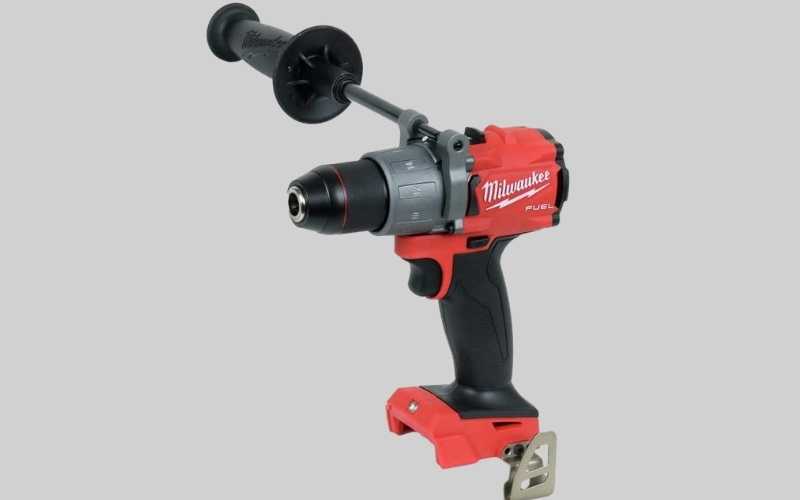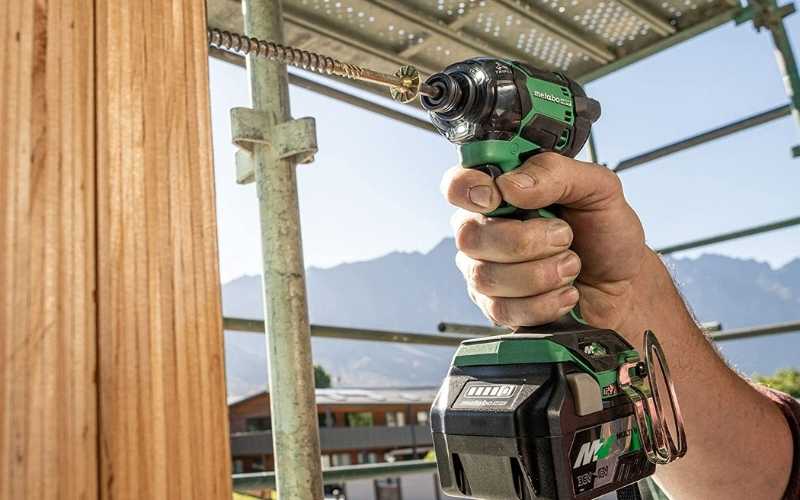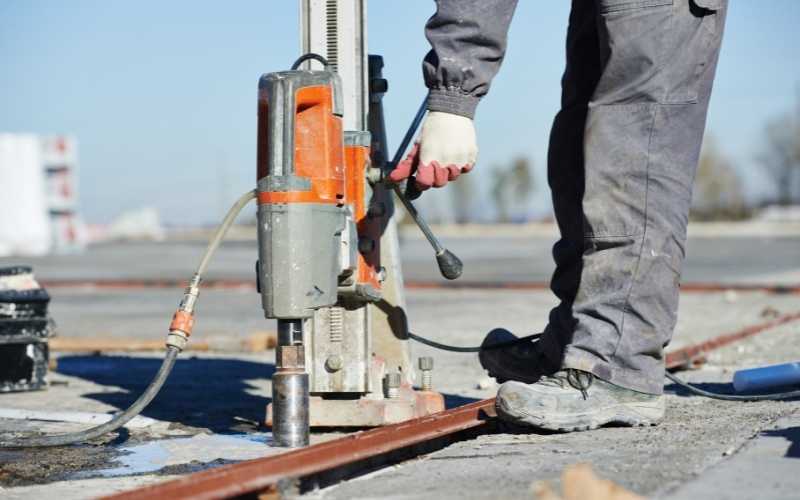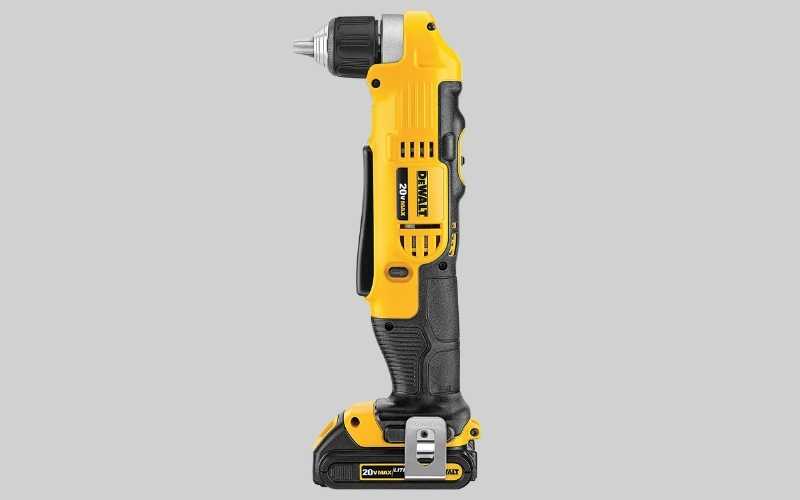There are different types of drills craftsmen use for construction purposes. Whether you’re a woodworker, metal fabricator, a builder or even a professional homeowner, every once in a while, you’ve made use of a certain type of drill in one way or the other.
In its most basic form, it’s a tool that turns a bit at very high speeds to make a hole. The whole purpose of having it is to make holes in materials like wood, plastic, metal, concrete, bricks, masonry and so on.
All it does is rotate a sharp bit at very high speeds. A power drill is basically the combination of a brushed or brushless motor and a chuck. The chuck is meant for holding a sharp bit while the motor rotates the chuck and bit, allowing it to make a hole in the material it’s in contact with.
Apart from making holes, a drill can also be used to drive screws and rotate other types of fasteners like nuts and bolts. When used for these purposes it’s called a driver. That’s why, in its most basic form, it is called a drill driver, because it performs both functions.
When we talk about drills, what comes to mind most of the time are power drills with electric motors. However, there are hand powered types as well used for various types of crafts.
Here in this article, I’ve listed and explained every particular type of drill available out there and their applications, so you can know your options when choosing one for your craft.
Table of Contents
Pistol-Grip Drill Driver

The basic pistol-grip drill driver is the most common handheld hole making and fastener-driving tool you’ll find in the hands and toolboxes of most craftsmen. You probably have one of these already.
The most common use is for making small pilot holes for screws so they the screw does not split the wood when driven into it.
Apart from making the pilot holes, they’re also used for driving and setting the screws as well. Some of these come equipped with a clutch which allows the user to control the amount of torque transferred to the bit, thus preventing it from stripping or damaging the screw head.
For basic drilling and driving of screws into wood, plastic and similar materials, the basic pistol-grip power drill will surely suffice.
Hammer drill

Some materials like concrete, stone or masonry are very hard and thus, driving a bit into them with a conventional power drill is like fetching water with a spoon, inefficient.
That’s why there are hammer drills. Unlike conventional pistol-grip drills, they come equipped with a clutch-actuated hammering mechanism which causes the chuck to move rapidly forward and backward as it rotates the bit.
This combined motion adds more force and makes it easier for it to be used on materials harder than wood such as concrete and other masonry materials.
Rotary Hammer

A rotary hammer is like a hammer drill on steroids. That is because it basically does the same thing of hammering or pushing the bit in and out of the hole you’re making, but it does it with much more force. In terms of size, it’s even bigger and heavier.
Instead of the clutch used in a conventional hammer drill, the rotary hammer uses a piston mechanism to deliver a more powerful hammering blow which makes it more efficient for driving bits into harder materials and make bigger holes with it.
Rotary hammers can even be used as mini jackhammers. You can just attach a chisel bit and set it to perform just the hammering function, and it can be used for chiseling through hard concrete, masonry, bricks and so on.
The question is, do you need a rotary hammer? Well, if you’re a simple homeowner who carry out simple DIY projects at home, you probably don’t need one of these. You can do with a simple drill driver, or if you want a little upgrade to tackle tougher projects, you can get a simple hammer drill.
On the hand, if you work with hard concrete and masonry from time to time, then a simple drill-driver with a hammer function will not suffice. Having a rotary hammer will make your job a whole lot easier.
Impact Driver

These are not like conventional drills, but more like drivers. Impact drivers or wrenches, just like a hammer drill also have a hammering function. But the hammering action is not in the linear direction, but instead it occurs in the angular or rotational direction of the drill, giving it a much more greater turning force.
You’ll often find impact drivers in automobile repair and metal fabrication workshops for turning and loosening stuck fasteners like lug nuts and bolts. They’re also found among builders and construction workers for driving fasteners into hard composite materials.
If a conventional drill driver can’t turn it, an impact driver can certainly get it spinning in no time.
One feature that differentiates an impact driver from a conventional power drill is the type of chuck that comes with it.
Unlike the later, the chuck on an impact driver is a smaller hexagonal collet which does not accept regular bits. Because the hexagonal collect is smaller, it’s more compact and able to fit into tighter spaces.
The only downside to impact drivers is that most don’t have a variable speed function like regular handheld power drills. They have a fixed torque and speed and thus are not ideal for delicate work.
Core drill

Core drills are basically designed for cutting large holes in reinforced concrete, marble, bricks or any other masonry materials. They’re very powerful drills that are sometimes paired with a shaft or a rig to keep it stable as it cuts the hole through the material.
In terms of design, it’s basically a very huge and powerful motor paired with a circular bit that cuts out the material just like a hole saw does. Sometimes, the core drill is paired with a shaft or assembled as a rig to give it stability and accuracy during use.
Drill press

This is more like a power drilling machine that is mounted on a table or bolted to the floor with a worktable that allows you to secure or clamp the workpiece you’re working on.
Unlike a handheld power drill, it is a stationary piece of equipment, where you have to bring the workpiece to the tool.
It has several advantages over a handheld power drill. First of all, it ensures accuracy and consistent results. The angle of the spindle is directly perpendicular at 90 degrees to the table. That means the bit will never bend as it’s lowered into the workpiece, always producing a straight 90-degree hole.
With a handheld drill, there’s always a chance that there could be a slight bend and error when making the hole.
Also, less effort is required when pushing the spinning bit into the material. With a handheld drill, you have to add effort pushing the bit into the material.
With a drill press on the other hand, all you have to do is lower the chuck and spindle using a hand lever, all connected with the aid of a rack and pinion gear, allowing you more mechanical advantage and reducing the amount of effort required on your part.
Right Angle Drill

Right angle drills are just like conventional handheld power drills, but instead of a pistol grip handle, the chuck is at right angles or 90 degrees to grip.
These are specifically designed to fit into tight spaces where a conventional power drill will not fit into, like in between studs and joists, inside cabinets and so on.
As a homeowner, you’d rarely need one of these to make holes during your projects. But as a professional woodworker, they come very handy on the job.
Stud and Joist Drill

These are special types of right-angle drills specially designed for cutting holes through studs and joists during building construction.
They’re larger, heavier and much more powerful than your typical 90-degree drill. Their design allows it to fit easily in between studs and joist.
If you’re an electrician, plumber, handyman or framer, you’ll find it very useful for cutting holes where electrical and water pipes pass through.

